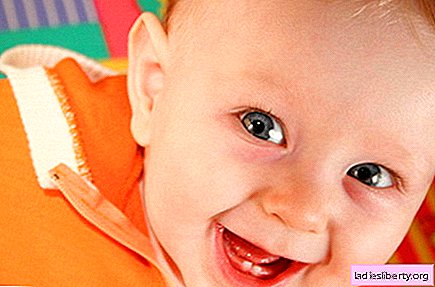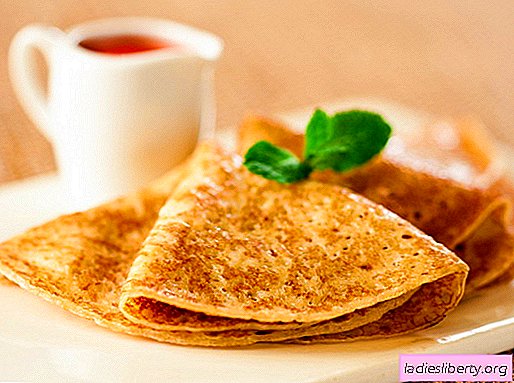
It is necessary to take care of the health of the child from his very birth. Especially when it comes to dental health. The nature of the appearance of milk teeth, their further change by permanent ones, is an important moment in the physical development of the child.
When the teeth begin to cut
Usually the first baby teeth in a baby begin to appear by the age of six to eight. These are average results. Therefore, if you do not fit into the generally accepted terms, do not panic. Each organism is individual. The first tooth can appear at four months, and maybe at ten still not be. It depends on many factors, both external and internal. For example, the quality of water, the nature of the diet (breast or artificial), climatic conditions in which the child lives, can affect. It is believed that the hotter the climate, the earlier the teeth should erupt in the baby. Although this is not a common truth.
The timing of the appearance of teeth can be affected by heredity, a genetic predisposition. If the baby’s grandmother or grandfather already had several teeth in six months, it is likely that the child’s first teeth will appear much earlier than generally accepted.
An important role is played by the mother’s health during pregnancy: how she felt, what she ate, whether her body received in sufficient quantities all vitamins and minerals. That is why it is especially important to monitor a balanced diet during pregnancy. After all, the beginnings of teeth are laid in the baby’s body long before his birth, about the third or fourth month of pregnancy of the future mother. The overall health of the child, the proper development of all internal organs, as well as teeth, often depend on how full her nutrition will be.
Expectant mother should abandon the use of tetracycline during pregnancy. Combining with calcium, it reacts and stains the teeth in a greenish or brownish tint. For the same reason, it is not prescribed for children under 13-14 years old until their teeth are fully formed.
The teething procedure of all deciduous teeth
By the age of 2.5 - 3 years, your child should have a complete set of 20 milk teeth. And it all starts much earlier. About six months later, the first two lower teeth appear in the baby, and after a month two upper teeth. At this time, the children are especially cute: with four incisors, they look like funny rabbits, especially when they smile.
By the year the child can already be called a decent fang. It boasts eight teeth - four lower and upper incisors. In the period from a year to a year and a half, the baby has 4 more teeth, his first molars (molars) - 2 from the top and bottom. In a month or two, four more teeth will come out into the light - two lower and upper fangs. And completing the eruption of baby teeth - the second molars, 2 above and 2 below. This period falls on the baby's age from 2 to 3 years.
I would like to remind once again that these are average indicators that you can only focus on. Therefore, your child may have shifts in the timing of the appearance of teeth in one or the other direction, which is not considered an anomaly. The early or late appearance of teeth does not affect their quality.
The erupted milk teeth are firmly pressed against each other, there are no gaps or crevices between them. But, as the time for the change of milk teeth to constant approaches, gaps between the teeth should appear. Everything is thought out to the smallest detail by nature: otherwise, permanent teeth, which are larger than milk teeth, simply cannot fit in the vacant space and begin to grow crookedly.

Features of teething in a child
The first tooth in your baby can erupt both one and paired with another. The same picture can emerge with the appearance of subsequent teeth. Sometimes 4 teeth go simultaneously at once. This is not a deviation, the massive appearance of teeth affects only the timing of their eruption.
There are times when the very order of appearance of the teeth changes. For example, fangs will appear earlier than the first molars. This is not considered a developmental disruption, just nature has decided to fool around a bit, which was manifested in the individual features of teething of your baby.
Previously, there was such an assumption that the late appearance of teeth in children is caused by a disease such as rickets. But after numerous studies, scientists came to the conclusion that this assumption is erroneous. A delay in the eruption of milk teeth is characteristic of many quite healthy and normally developing babies.
Whatever time your child’s teeth erupted, this period is considered normal for him. This applies to milk teeth, and to permanent, and to the teeth of wisdom. You should be alerted only by one moment - if not a single tooth has erupted in the child up to a year. In this case, you can start to sound the alarm and suggest that the cause of such a frank delay in the appearance of teeth may be some hidden diseases, including rickets.
Teething: signs and symptoms
How do you know if a child’s teeth are cutting? Closer to six months, you can check the baby’s gums. If the teeth are about to climb, his gums will be reddened and slightly swollen. This is due to increased blood supply to this area of the oral mucosa.
The appearance of the first cloves gives the child a lot of anxiety. A week or two before they appear, the baby often begins to cry, rub his gums with his fists, gnaw at the bed, pull objects in his mouth. At this time, the teeth break through the gums, there is a mechanical irritation of the nerve endings, so the gums begin to hurt, itch and itch. Increased salivation is formed, which the child can not cope on his own, because still does not know how to regulate the amount of saliva formed in the mouth. Drooling saliva, if not wiped, can lead to irritation of the baby's skin and small pimples or redness will appear around the mouth.
The baby may have a runny nose. It is provoked by the glands of the nasal mucosa, which begin to secrete an increased amount of mucus. The mucus on the background of teething looks watery - flowing and transparent. Such a runny nose lasts no more than three to four days. It does not require treatment, it is only necessary, as necessary, to mechanically clean the baby’s nose from mucus.
According to the general pathways of the nervous system, pain can be transmitted to the ears. Therefore, the child begins to pull himself by the ears or scratch them. So he tries to reduce itching and pain. When feeding, the baby becomes fussy, tries to dodge a spoon with food, his appetite decreases. Do not feed it through force, it is better to give more fluid.
As soon as the tooth in the child erupted, all the negative symptoms should disappear on their own. Do not put your hands in the child’s mouth, checking if a tooth has cut through or not. So you can easily bring the infection into the oral cavity. It is better to examine his mouth when he yawns or smiles. The appeared tooth can also be noticed by chance. When feeding a baby with an iron spoon, you will hear a characteristic sound.
Diarrhea and teething temperature
Against the background of the appearance of teeth in the baby, diarrhea may well begin. Most often, it appears due to a change in the child’s usual diet and a violation of the intestinal microflora. Mom, wanting to calm the child and ease his suffering, begins to feed him more often, to give new products. Yes, and the baby, wanting to relieve itching, pulls all surrounding objects into his mouth. Such diarrhea lasts no more than two days, as a rule, it is watery, and not frequent - up to three times a day.
Elevated temperature in a child, with the appearance of the first or next tooth, is not such a rare occurrence. Usually it should not rise above 38C. If the thermometer shows a temperature of 38.5, 39 or higher, it is better to play it safe and call a doctor. Because a particularly high temperature can be both an individual reaction of the body to teething, and a manifestation of the symptoms of any infection, including intestinal. Especially if the temperature is accompanied by frequent diarrhea, which does not pass after the teething.
How to help your baby when teeth are cut
The process of teething is not always painless for a child. He becomes restless, moody, often crying. Do not be afraid to spoil the baby, take it in your hands more often, caress and spare.
There are several other ways you can help your child in this situation:
- it is necessary to purchase teething teeth - plastic or rubber rings or toys, which the baby can scratch the gums and reduce itching. Particularly soothing teething agents with fluid inside. Before you give it to a child to chew, it needs to be cooled, for example, put in the refrigerator. If the baby refuses the teether, you can give him ordinary drying;
- use soothing gels. Almost all such products contain painkillers in small doses, for example, lidocaine and fillers (menthol to cool the gums, flavorings, astringents). They all passed clinical trials, received the approval of pediatricians, they have no side effects. These are Kalgel, Mundizal, Dentinoks and others. These drugs do not have a strict order of use, they smear the gums when they hurt and the baby is restless. Unnecessarily, for prevention, gels should not be used. Usually the baby’s gums are smeared no more than 3-4 times for no more than three consecutive days. If your child is allergic to lidocaine, use Dr. Baby gel, which is specifically designed for allergic children;
- you can massage the baby’s gums with your index finger, after wrapping it with a clean gauze swab. Before massage, the swab should be moistened in cold water and squeezed. If you don’t have time to manipulate with a gauze swab, you can buy a massage brush specially made for such cases, which is put on your finger;
- For some babies, sucking a cold iron spoon or a pacifier previously chilled helps. In order not to bring bacteria and microbes that are contained in the saliva of an adult into the child’s body, do not lick the nipples and soothers and do not try food from the baby’s spoon;
So that the constantly flowing saliva does not irritate the skin of the child, as it drains, it is necessary to wipe it with a clean napkin or towel. In order not to injure the delicate skin of the baby, it is better not to wipe the saliva, but to get wet. When the baby is sleeping, with heavy salivation, a tissue napkin can be put under his head. Then you do not have to often override the sheets.
During teething, the child feels physiological discomfort, which causes stress on the nervous system. Unlike older children in infants of the first years of life, fatigue and exhaustion of nerve functions occurs much faster. Inflammatory processes of the gums cause a fever, cause diarrhea and prevent the child from falling asleep. Conventional drugs have only analgesic or anti-inflammatory effects. Therefore, doctors usually recommend Dentokind, specially created for babies, which, in addition to analgesic and anti-inflammatory effects, calms the nervous system and stabilizes sleep.
Comments











